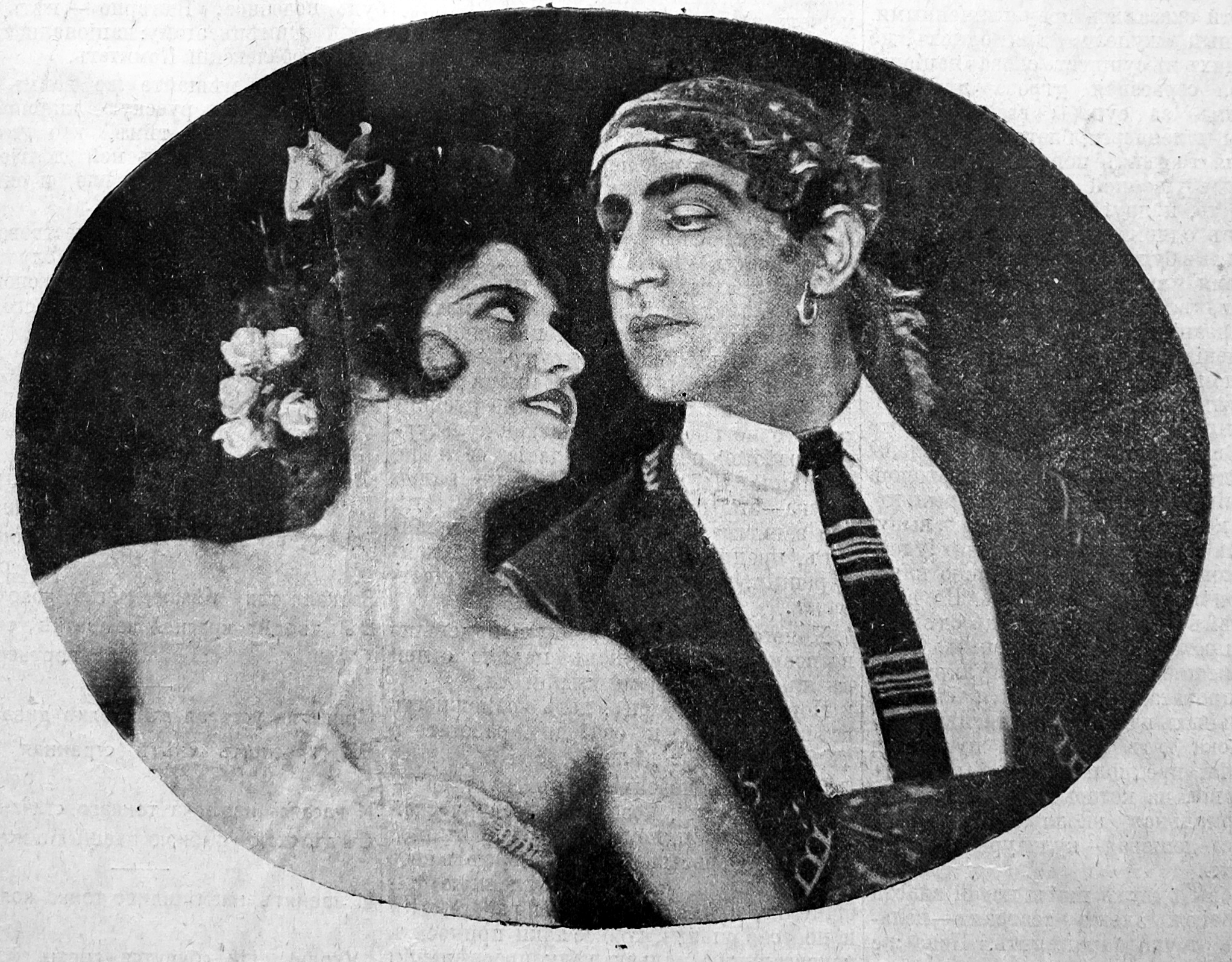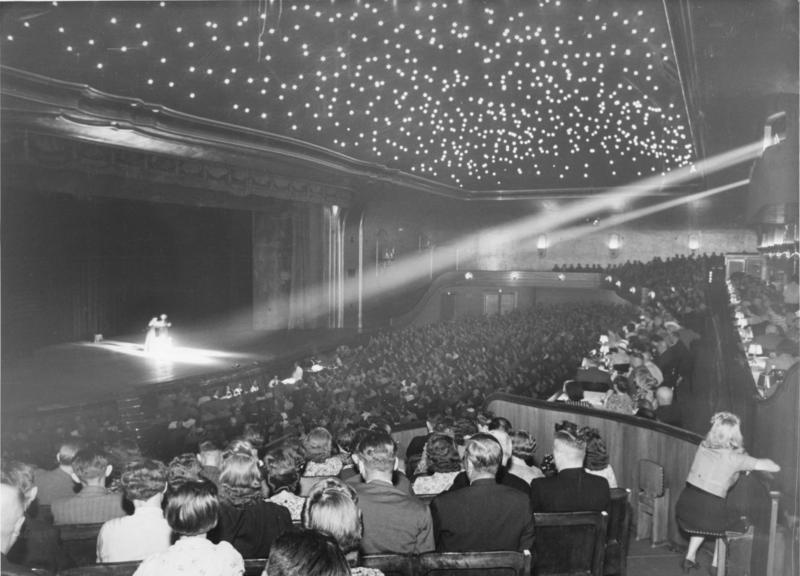|
The Infernal Power
''The Infernal Power'' (German: ''Die höllische Macht'') is a 1922 German silent film directed by Robert Wiene and starring Thea Kasten, Emil Lind and Ossip Runitsch. The film is now a lost film, and virtually nothing is known of its plot or genre.Jung & Schatzberg p.98 Cast * Thea Kasten * Emil Lind * Ossip Runitsch * Hans Schweikart Hans Schweikart (1 October 1895 – 1 December 1975) was a German film director, actor and screenwriter. He directed 28 films between 1938 and 1968. He wrote for the film '' The Marriage of Mr. Mississippi'', which was entered into the 11 ... References Bibliography * Jung, Uli & Schatzberg, Walter. ''Beyond Caligari: The Films of Robert Wiene''. Berghahn Books, 1999. External links * 1922 films Films of the Weimar Republic German silent feature films Films directed by Robert Wiene Lost German films German black-and-white films {{Germany-silent-film-stub ... [...More Info...] [...Related Items...] OR: [Wikipedia] [Google] [Baidu] |
Robert Wiene
Robert Wiene (; 27 April 1873 – 17 July 1938) was a film director of the silent era of German cinema. He is particularly known for directing the German silent film ''The Cabinet of Dr. Caligari'' and a succession of other German Expressionism, expressionist films. Wiene also directed a variety of other films of varying styles and genres. Following the Nazi rise to power in Germany, Wiene, who was of Jewish descent, fled into exile. Biography Early life Robert Wiene was born in Breslau, in the German Province of Silesia (now the city of Wrocław in Poland), as the elder son of the successful theatre actor Carl Wiene. His younger brother Conrad Wiene, Conrad also became an actor, but Robert Wiene at first studied law at the University of Berlin. Career in Germany In 1908 he also started to act, at first in small parts on stage. His first involvement with film was in 1912, writing and (possibly) directing ''Die Waffen der Jugend''. His most memorable feature films are the horror ... [...More Info...] [...Related Items...] OR: [Wikipedia] [Google] [Baidu] |
Thea Kasten
Thea may refer to: * Thea (name), a given name * Ancient Greek term for goddess, including an alternative spelling of Theia * ''Thea'', the former name of the tea plant genus, now included in ''Camellia'' * Thea, a village in the municipal unit Messatida, Achaea, Greece * Thea (award), the annual award from the Themed Entertainment Association * Thea (New-Gen), a Marvel Comics New-Gen character * ''Thea'' (TV series), a 1993 short-lived television series starring Thea Vidale and Brandy Norwood * Tampa-Hillsborough Expressway Authority, a regional expressway authority based in Hillsborough County, Florida * Another word for the mythological animal theow * "Thea", a song by Goldfrapp from ''Tales of Us'' * Theia (planet), a planet hypothesized to have collided with Earth 4.5 billion years ago to form the moon * ''Thea'', a video game series beginning with '' Thea: The Awakening'' See also * Theia (other) * Thia (other) Thia may refer to: * ''Thia'', a genus in whi ... [...More Info...] [...Related Items...] OR: [Wikipedia] [Google] [Baidu] |
Emil Lind
Emil Lind (1872–1948) was an Austrian actor. Selected filmography * '' The Story of Dida Ibsen'' (1918) * '' Die Arche'' (1919) * '' Prostitution'' (1919) * '' Humanity Unleashed'' (1920) * '' The Infernal Power'' (1922) * '' I.N.R.I.'' (1923) * '' Superfluous People'' (1926) * ''Mata Hari'' (1927) * ''The Weavers The Weavers were an American folk music quartet based in the Greenwich Village area of New York City originally consisting of Lee Hays, Pete Seeger, Ronnie Gilbert, and Fred Hellerman. Founded in 1948, the group sang traditional folk songs fr ...'' (1927) * '' Bigamie'' (1927) Bibliography * Jung, Uli & Schatzberg, Walter. ''Beyond Caligari: The Films of Robert Wiene''. Berghahn Books, 1999. External links * 1872 births 1948 deaths Austrian male film actors Austrian male stage actors Austrian male silent film actors Male actors from Vienna 20th-century Austrian male actors {{Austria-actor-stub ... [...More Info...] [...Related Items...] OR: [Wikipedia] [Google] [Baidu] |
Ossip Runitsch
Ossip Iliych Runitsch ( rus, Осип Ильич Рунич, p=ˈosʲɪp ɨˈlʲjitɕ rʊˈnʲitɕ; born Osip Fradkin, 18896 April 1947) was a Russian Empire silent film actor, producer and stage director. He was one of the biggest stars of Russian silent cinema and one of the first iconic figures of Russian cinematograph. In 1915-1919 he starred in some successful silent films of that time as '' Molchi, grust... molchi'' and ''Posledneiye tango'' with other film stars such as Vera Kholodnaya, Vitold Polonsky and Pyotr Chardynin. Runitsch was a long time admirer of his co-star Kholodnaya and after her death in 1919 during Russian Civil War, he fled Russia and left for Italy where he took part in a number of films. Later, he moved to Germany where he starred together with Emil Jannings and other famous German actors. In 1925 he married Nina Pavlishcheva, a courtier ballet dancer. By the late 1930s, he was living in Riga, Latvia, where he played in the troupe of Russian Drama The ... [...More Info...] [...Related Items...] OR: [Wikipedia] [Google] [Baidu] |
Silent Film
A silent film is a film with no synchronized recorded sound (or more generally, no audible dialogue). Though silent films convey narrative and emotion visually, various plot elements (such as a setting or era) or key lines of dialogue may, when necessary, be conveyed by the use of title cards. The term "silent film" is something of a misnomer, as these films were almost always accompanied by live sounds. During the silent era that existed from the mid-1890s to the late 1920s, a pianist, theater organist—or even, in large cities, a small orchestra—would often play music to accompany the films. Pianists and organists would play either from sheet music, or improvisation. Sometimes a person would even narrate the inter-title cards for the audience. Though at the time the technology to synchronize sound with the film did not exist, music was seen as an essential part of the viewing experience. "Silent film" is typically used as a historical term to describe an era of cinema pri ... [...More Info...] [...Related Items...] OR: [Wikipedia] [Google] [Baidu] |
German Language
German ( ) is a West Germanic languages, West Germanic language mainly spoken in Central Europe. It is the most widely spoken and Official language, official or co-official language in Germany, Austria, Switzerland, Liechtenstein, and the Italy, Italian province of South Tyrol. It is also a co-official language of Luxembourg and German-speaking Community of Belgium, Belgium, as well as a national language in Namibia. Outside Germany, it is also spoken by German communities in France (Bas-Rhin), Czech Republic (North Bohemia), Poland (Upper Silesia), Slovakia (Bratislava Region), and Hungary (Sopron). German is most similar to other languages within the West Germanic language branch, including Afrikaans, Dutch language, Dutch, English language, English, the Frisian languages, Low German, Luxembourgish, Scots language, Scots, and Yiddish. It also contains close similarities in vocabulary to some languages in the North Germanic languages, North Germanic group, such as Danish lan ... [...More Info...] [...Related Items...] OR: [Wikipedia] [Google] [Baidu] |
Cinema Of Germany
The film industry in Germany can be traced back to the late 19th century. German cinema made major technical and artistic contributions to early film, broadcasting and television technology. Babelsberg Studio, Babelsberg became a household synonym for the early 20th century film industry in Europe, similar to Hollywood later. Germany witnessed major changes to its identity during the 20th and 21st century. Those changes determined the periodisation of national cinema into a succession of distinct eras and movements. History 1895–1918 German Empire The history of cinema in Germany can be traced back to the years shortly after the medium's birth. On 1 November 1895, Max Skladanowsky and his brother Emil demonstrated their self-invented movie projector, film projector, the Bioscop, at the Berlin Wintergarten theatre, Wintergarten music hall in Berlin. A 15-minute series of eight short films were shown – the first screening of films to a paying audience. This performance pre ... [...More Info...] [...Related Items...] OR: [Wikipedia] [Google] [Baidu] |
Silent Film
A silent film is a film with no synchronized recorded sound (or more generally, no audible dialogue). Though silent films convey narrative and emotion visually, various plot elements (such as a setting or era) or key lines of dialogue may, when necessary, be conveyed by the use of title cards. The term "silent film" is something of a misnomer, as these films were almost always accompanied by live sounds. During the silent era that existed from the mid-1890s to the late 1920s, a pianist, theater organist—or even, in large cities, a small orchestra—would often play music to accompany the films. Pianists and organists would play either from sheet music, or improvisation. Sometimes a person would even narrate the inter-title cards for the audience. Though at the time the technology to synchronize sound with the film did not exist, music was seen as an essential part of the viewing experience. "Silent film" is typically used as a historical term to describe an era of cinema pri ... [...More Info...] [...Related Items...] OR: [Wikipedia] [Google] [Baidu] |
Lost Film
A lost film is a feature or short film that no longer exists in any studio archive, private collection, public archive or the U.S. Library of Congress. Conditions During most of the 20th century, U.S. copyright law required at least one copy of every American film to be deposited at the Library of Congress at the time of copyright registration, but the Librarian of Congress was not required to retain those copies: "Under the provisions of the act of March 4, 1909, authority is granted for the return to the claimant of copyright of such copyright deposits as are not required by the Library." A report created by Library of Congress film historian and archivist David Pierce claims: * 75% of original silent-era films have perished. * 14% of the 10,919 silent films released by major studios exist in their original 35 mm or other formats. * 11% survive only in full-length foreign versions or film formats of lesser image quality. Of the American sound films made from 1927 to 1 ... [...More Info...] [...Related Items...] OR: [Wikipedia] [Google] [Baidu] |
Hans Schweikart
Hans Schweikart (1 October 1895 – 1 December 1975) was a German film director, actor and screenwriter. He directed 28 films between 1938 and 1968. He wrote for the film ''The Marriage of Mr. Mississippi'', which was entered into the 11th Berlin International Film Festival. Selected filmography * '' Out of the Depths'' (1919) * ''The House on the Moon'' (1921) * ''The Infernal Power'' (1922) * ''The Doll Maker of Kiang-Ning'' (1923) * '' Two Children'' (1924) * '' Hunting You'' (1929) * ''Liberated Hands'' (1939) * ''The Girl from Barnhelm'' (1940) * ''The Girl from Fano'' (1941) * '' The Comedians'' (1941 - produced) * ''The Endless Road'' (1943) * '' I Need You'' (1944) * ''Insolent and in Love'' (1948) * '' Night of the Twelve'' (1949) * ''Beloved Liar'' (1950) * ''Melody of Fate'' (1950) * ''That Can Happen to Anyone'' (1952) * '' Must We Get Divorced?'' (1953) * ''A House Full of Love'' (1954) * ''The Blue Danube'' (1955) * ''Stage Fright'' (1960) * ''Agatha, Stop T ... [...More Info...] [...Related Items...] OR: [Wikipedia] [Google] [Baidu] |
1922 Films
The following is an overview of 1922 in film, including significant events, a list of films released and notable births and deaths. Top-grossing films (U.S.) The top nine films released in 1922 by U.S. gross are as follows: Events * June 11 – United States première of Robert J. Flaherty's ''Nanook of the North'', the first commercially successful feature length documentary film. * November 26 – '' The Toll of the Sea'', starring Anna May Wong and Kenneth Harlan, debuts as the first general release film to use two-tone Technicolor (''The Gulf Between'' was the first film to do so but it was not widely distributed). Notable films released in 1922 United States unless stated A *''At the Sign of the Jack O'Lantern'' (lost), directed by Lloyd Ingraham, based on the 1905 novel by Myrtle Reed B *''The Bachelor Daddy'' (lost), directed by Alfred E. Green, starring Thomas Meighan *''The Beautiful and Damned'' (lost), directed by William A. Seiter, starring Marie Prevost * ... [...More Info...] [...Related Items...] OR: [Wikipedia] [Google] [Baidu] |






